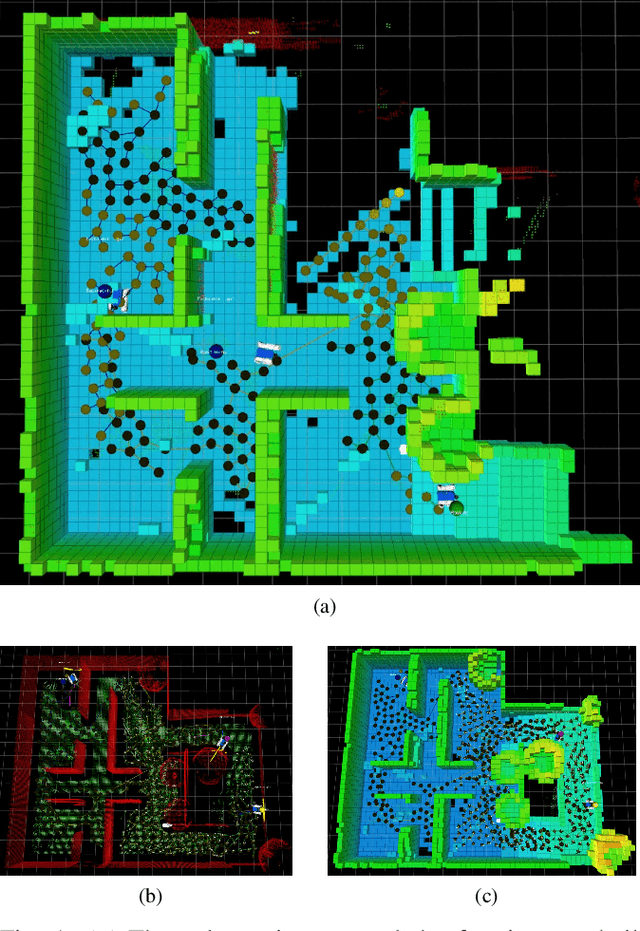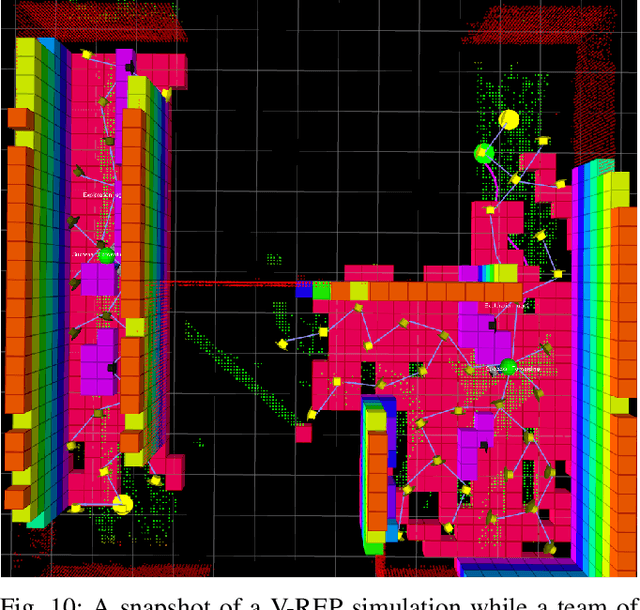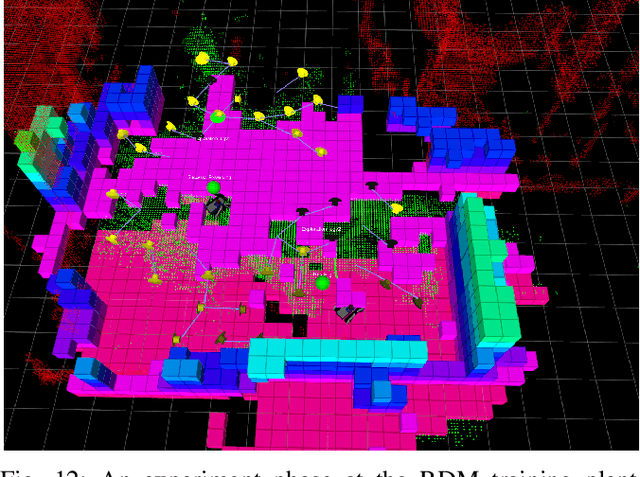Rui P. Rocha
3D Multi-Robot Exploration with a Two-Level Coordination Strategy and Prioritization
Jul 07, 2023



Abstract:This work presents a 3D multi-robot exploration framework for a team of UGVs moving on uneven terrains. The framework was designed by casting the two-level coordination strategy presented in [1] into the context of multi-robot exploration. The resulting distributed exploration technique minimizes and explicitly manages the occurrence of conflicts and interferences in the robot team. Each robot selects where to scan next by using a receding horizon next-best-view approach [2]. A sampling-based tree is directly expanded on segmented traversable regions of the terrain 3D map to generate the candidate next viewpoints. During the exploration, users can assign locations with higher priorities on-demand to steer the robot exploration toward areas of interest. The proposed framework can be also used to perform coverage tasks in the case a map of the environment is a priori provided as input. An open-source implementation is available online.
A localization approach for autonomous underwater vehicles: A ROS-Gazebo framework
Nov 14, 2018



Abstract:Autonomous Underwater Vehicles (AUVs) have the ability to operate in harsh underwater environments without endangering human lives in the process. Nevertheless, just like their ground and aerial counterparts, AUVs need to be able to estimate their own position. Yet, unlike ground and aerial robots, estimating the pose of AUVs is very challenging, with only a few high-cost technological solutions available in the market. In this paper, we present the development of a realistic underwater acoustic model, implemented within the Robot Operating System (ROS) and the Gazebo simulator framework, for localization of AUVs using a set of water surface robots, time of flight of underwater propagated acoustic waves, and a multilateration genetic algorithm approach.
 Add to Chrome
Add to Chrome Add to Firefox
Add to Firefox Add to Edge
Add to Edge